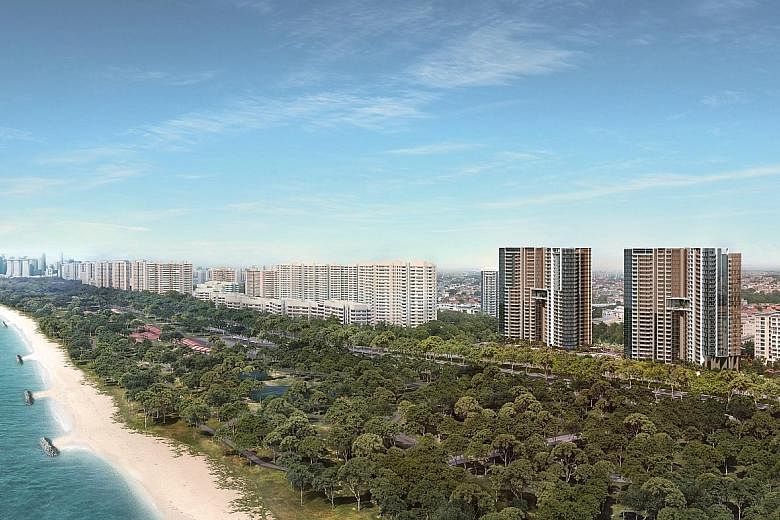Additional design guidelines will be imposed where appropriate on new development sites along the East Coast Parkway (ECP) to ensure the new buildings integrate well with the surroundings.
The move comes as the "ECP corridor becomes more developed with higher-density developments", the Urban Redevelopment Authority (URA) told The Straits Times.
Urban design guidelines, which play a key role in creating attractive and liveable areas, vary from site to site and over time in tandem with planning needs.
The URA added: "We have put in guidelines to ensure that new buildings along the ECP avoid wall-like form, and feature well-integrated and lushly planted sky terraces to contribute to the sense of pervasive greenery along this major gateway corridor."
The Siglap Road plot of the upcoming Seaside Residences is the first government land sales site along the ECP to face these additional design guidelines.
"Where appropriate, these requirements will be included as conditions to be attached to sale sites," noted a URA spokesman.
-
45m
Minimum width of urban window - a no-build zone - through the middle of the site.
65%
Percentage total area of site that must be used for greenery and landscaping.
Industry players say design guidelines provide clarity to the developers and architects on the design parameters, and offer urban planners more certainty on what will be built on the site.
They also ensure that the future developments align with the URA's overall planning vision for the area, as well as enhance the skyline and the streetscape.
"For the ECP area, particularly developments fronting the expressway - they are one of the first things that tourists and local residents would see travelling to and from the airport," said Mr Alan Fan, design director at Topos Design Studio.
Seaside Residences developer Frasers Centrepoint Singapore told The Straits Times the additional design requirements included an "urban window" of at least 45m, meaning there should be a 45m-wide no-build zone through the middle portion of the site.
Another guideline called for greenery and landscaping offered at the development to be equivalent in area to 65 per cent of the site area. These can include sky terraces and roof gardens.
The developer said each pair of residential towers will be spaced 45m apart, thereby meeting the urban window requirement. It has also reduced the number of units to be built at Seaside Residences by about 10 per cent to 843.
Having fewer units means a reduction in the number of carpark spaces needed, which lends itself to addressing the landscaping issue.
"We are able to put them all in the basement, freeing up the ground level for more greenery to meet the landscaping requirement," said Mr Cheang Kok Kheong, head of development and property at Frasers Centrepoint Singapore.
The URA said it translates its "urban design intentions" into urban design guidelines. In developing the guidelines, it considers factors including building form and height, pedestrain connectivity, greenery as well as the new development's relationship with adjacent buildings and open spaces.


